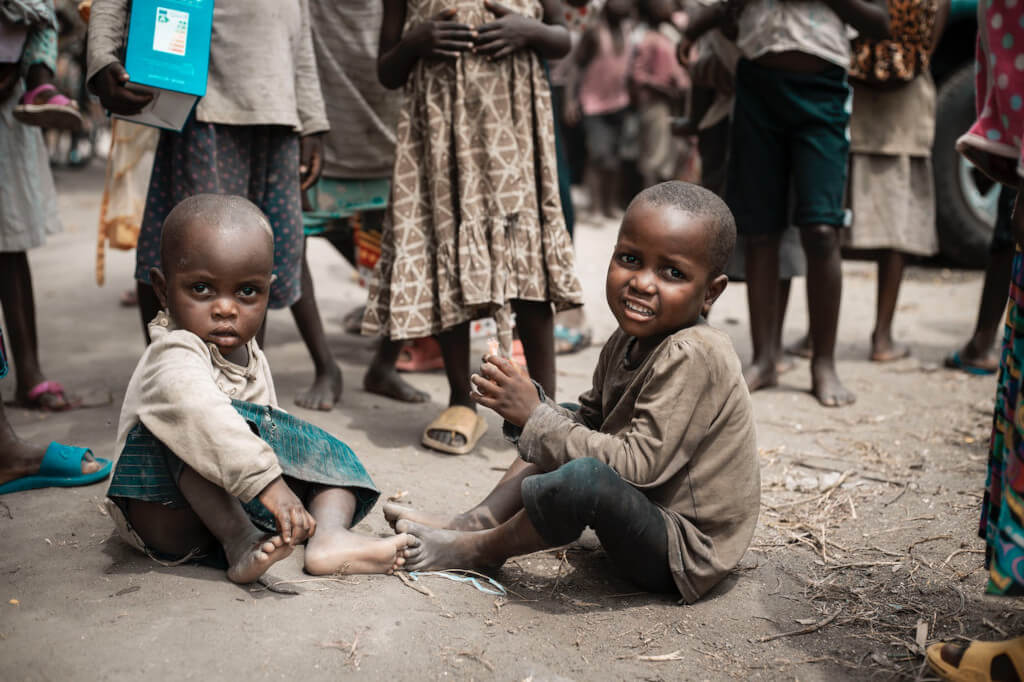Child Nutrition Programs Can Contribute to Social Inequalities
It is possible that programs that enhance nutrition, particularly for children and women who are pregnant, can be crucial for maintaining health, promoting physical growth, and fostering cognitive development, thereby empowering happier conditions and futures. There are reams of research papers that can affirm the fact that if a government or a funder spends a significant amount of money on nutrition, they will see a significant return on their efforts in the form of lives that are either improved or saved.
It is not widely known that the full benefits of providing nutritional support to children who are in the greatest need do not always materialize. Nutritional interventions, by themselves, are not living up to their fullest potential for any of the people who receive them.
This is because context affects the value of involvement, both in the present and the future. Adversity is almost always present in the childhoods of children who have the greatest need for assistance. That persistent adversity makes the positive impact of improved early nutrition less noticeable.
Malnourishment imposes a heavy toll in South Africa, with 15% of babies being born with lower birth weight, 27% of youngsters under the age of five being hindered, and 61% of children under the age of five being anemic. The impoverished one-fifth of children have a stunted growth rate of 36%, while the richest one-fifth of children have a rate of 12.5%.
On the other hand, statistics show that 68% of women in their childbearing years are overweight or obese, while 13% of children fall into this category. A third of women, or 31%, suffer from anemia, and 9.1% of pregnant women develop diabetes during their pregnancy. All of these conditions contribute to an increased likelihood of adverse outcomes for their infants. There is an increased risk of the baby developing diabetes later in life, complications during birth, prematurity, and disruptions in both their physical and mental development.
It is of the utmost importance to provide nutritional support for all types of malnutrition. In South Africa, the National Food and Nutrition Security Plan 2018-2023 has a total budget of $5.7 billion (R86.8 billion), of which nutrition interventions for women, children, and infants will receive an allocation of 8.1%, or $461.7 million (about R7.3 billion). This doesn’t take into account the expenditures or programs carried out by the private sector or any international agencies. Women and children in need receive additional food as well as specific vitamins and minerals thanks to the interventions carried out by the government.
However, despite these efforts, the advantages of early nutritional advancements may wear off for people who, later in life, face socioeconomic challenges.
Our research, which was conducted using a test case in South Africa, helps explain the various effects that nutrition interventions can have on a child during the early stages of their life. Children who are exposed to adversity do not fully realize the potential benefits that could accrue to them throughout their lives. The advantages accrue to an even greater degree over time for children who are already doing well.
South Africa is one of the countries with the most unequal distribution of wealth in the world, with just 10% of the population that owns 80% of the wealth in the country. It is of the utmost importance to prevent inequality from getting even worse. Despite this, the National Food and Nutrition Security Plan could further contribute to poverty if additional interventions are not implemented.
Research teams, funding agencies, and policymakers all need to take into account the environments in which children are raised and live to prevent inequality from becoming worse.
Even now, more than 25 years after the end of apartheid, South Africa is plagued by severe inequality in early childhood nutrition, education, and virtually every other aspect of human development, including employment, opportunities for training, gender equality, and participation in politics. Many children in South Africa are still unable to reach their full intellectual, social, and economic potential because of health disparities, insufficient coverage of nutrition education, and unfavorable circumstances later in life.
Our case study emphasizes the significance of one’s environment, not only during childhood but also into adulthood, about one’s long-term outcomes. It can direct the resource allocation to achieve the highest returns from investments in nutrition, particularly for children who are living in the poorest conditions.
A Case Study
The case study that we conducted investigates the relationships between early nutrition, the quality of schools, and job opportunities. A child’s development can be safeguarded through proper nutrition. The quality of the child’s school affects whether or not they will reach their full potential. The opportunities they have to find work shape their chances of realizing their potential in ways that are meaningful to them.
To construct the model, we made use of a hypothetical group consisting of 1.15 million kids. This is approximately the number of children who will be born in South Africa in the year 2021. We ran simulations to determine what would take place if dietary interventions were expanded to cover ninety percent of the cohort. We studied the effects on five different socioeconomic groups, each consisting of 230,000 children, and looked at factors such as nutrition, mortality, and years spent in school.
After that, we calculated the lifetime earnings that are associated with having a higher level of educational attainment. Here, we present four possible outcomes:
- A starting point with no additional treatment being provided
- Increasing the scale of nutrition interventions to 90 percent
- Increasing the scale of nutrition interventions while simultaneously improving the quality of schools
In Addition to Improvements in Education and Food Provision, Equitable Employment Opportunities Are Being Implemented
According to the findings, expanding nutrition interventions in the government sector would likely result in increased levels of productivity for the entire cohort. The value of the earnings would come to close to $2 billion in US currency. doing so would only cost $90 million (US), bringing the total cost of nutrient coverage up to 90%.
In other words, the investment return to endorse maternal and early childhood nutrition is high: 18 dollars in productive output for every dollar invested. It is estimated that nearly 2,000 lives could be spared. The prevalence of stunting in children aged two would decrease by over than 3%. The group as a whole would get an additional 53,000 years of schooling.
However, when we compared the outcomes for the various socioeconomic groups, we found something that is cause for concern. If nutrition initiatives were the only ones to be increased in size, the wealthiest children would benefit the most ($23 return for every $1 invested), while the children with the lowest incomes stand to gain the least ($16). Doing so would make the fundamental significant inequalities that exist even worse.
This is because the total value of the returns is dependent on the accessibility of educational opportunities, the quality of educational opportunities, and career prospects. All of these issues are more of a problem for the children who fall into the lowest income quintile.
If the quality of education received by every child were the same (the third scenario), the children from lower-income families would see the greatest returns on their investment in education, rather than those from higher-income families.
The Effects of Social Disparity
When looking at the various aspects of growth simultaneously and gaining an awareness of the dynamic relationship between them, one can find opportunities to improve one aspect of development at the expense of another.
A transition away from concentrating on initiatives “only” one at a time, such as “only” health, schooling, or nutrition, is required by the prototype. The positive effects that other interventions could have could very well be hindered by these interventions with a narrow focus. The first step in developing holistic intervention strategies that will have the greatest impact where they are required is to identify the factors that are impeding the progress of a child throughout their lifetime.

